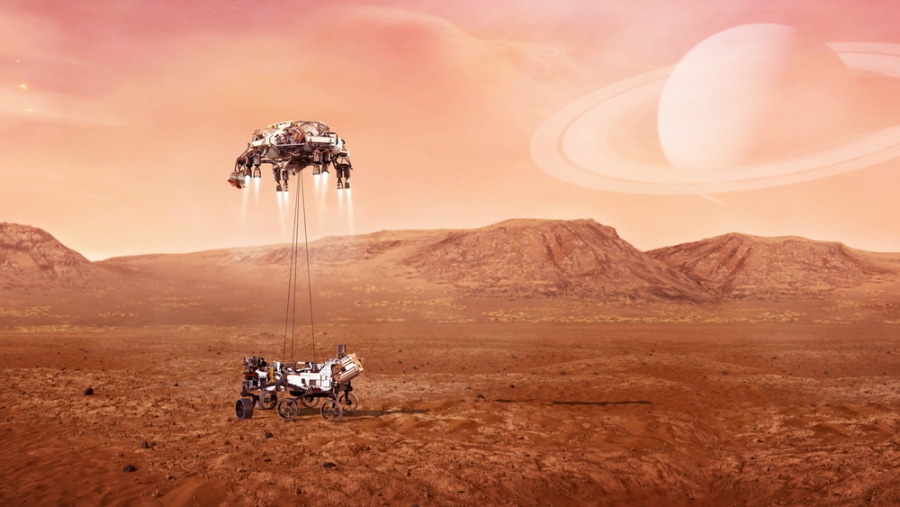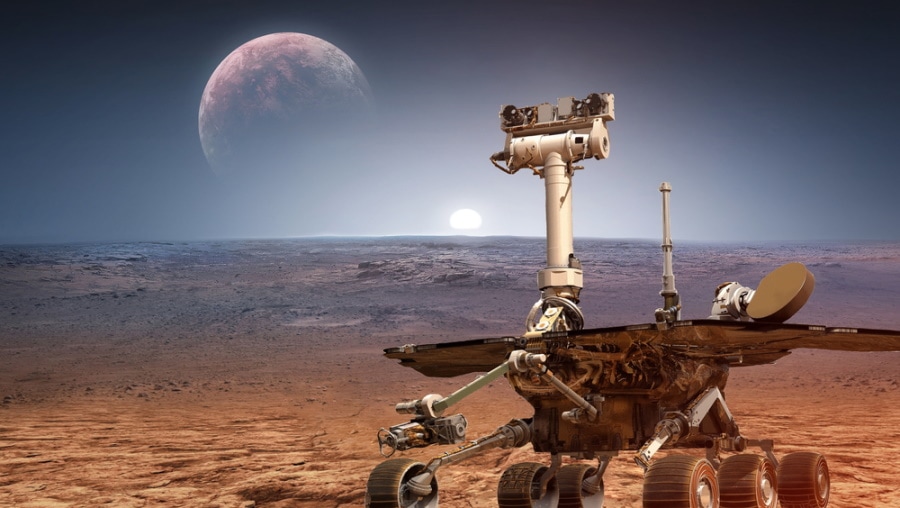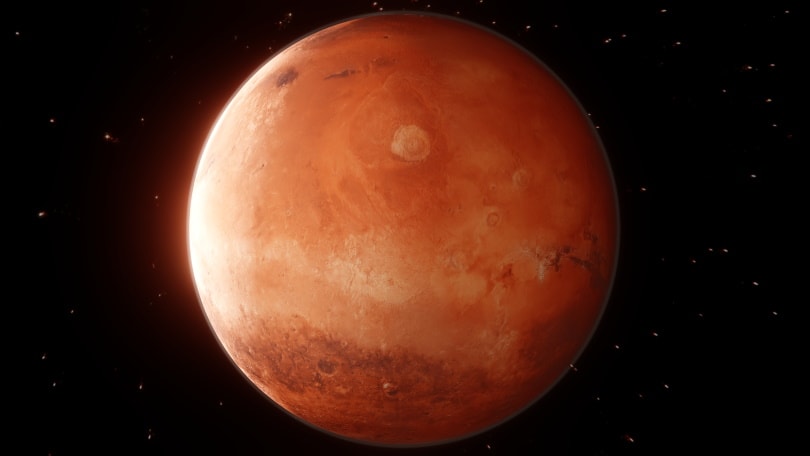What Is Mars’ Atmosphere Composed Of? The Interesting Answer
Last Updated on

We know a lot, relatively speaking, about the fourth planet in our Solar System. It is nearly 33.9 million miles1 away from Earth. However, it lends itself to exploration better than other planets because its atmosphere and surface conditions aren’t as harsh. The NASA rovers, Perseverance and Curiosity, continue to gather data, having reached Mars in 2021.

The question of whether a planet can support life as we know it is one of the first that scientists strive to answer. While the clouds and winds on Mars and the Earth are comparable, the atmosphere and its composition are different. We have lots of nitrogen and oxygen here on Earth, but Mars’ atmosphere is mostly made up of carbon dioxide. Whether the atmosphere on a planet can support life usually boils down to several environmental factors:

- Atmospheric pressure
- Surface temperatures
- Fluctuations around the celestial body
- Type of surface
- Presence of water
- Atmosphere composition
The Atmosphere of Mars
The surface temperatures of Mars aren’t as extreme as other planets. A typical range is between -225℉–70℉. The winds aren’t too bad, either at only 10–20 mph. The problem is the dust, which often stays suspended because the wind is constant. This would make breathing difficult. It would also obscure your vision because it would be so hazy.
Nitrogen (78.08%) and oxygen (20.95%) make up over 90% of the Earth’s atmosphere. Other present gases include:
- Water (0%–4%)
- Argon (0.93%)
- Carbon dioxide (0.0360%)
- Neon (0.0018%)
- Helium (0.0005%)
- Methane (0.00017%)
- Hydrogen (0.00005%)
- Nitrous oxide (0.00003%)
- Ozone (0.000004%).

Mars has a different composition that has the following percentages:
- 32% carbon dioxide
- 7% nitrogen
- 6% argon
- 13% oxygen
It’s easy to see the disconnect here and why the Red Planet is uninhabitable. Mars also has a thin atmosphere. Its gravity is about one-third of that of the Earth, with an atmospheric pressure of less than one-hundredth of ours. While water exists on Mars, the conditions prevent it from pooling on the surface. Instead, it exists in frozen ice caps. Nevertheless, there is evidence of ancient floods.
All these facts mean that NASA’s mission on Mars isn’t as much about finding any signs of life but learning from its past and how it formed and evolved. Nonetheless, scientists continue to investigate the possibilities. For example, geologists from the University of Georgia are working to replicate the chemical composition of Martian soil to see if plants can grow in it.
Scientists have theorized that soil amendments might make it possible, given the atmosphere’s composition. However, more research is necessary to confirm this hypothesis.


Conclusion
Mars continues to fascinate us, holding a promise of learning more about our Solar System. While scientists don’t think life is possible on Mars, there’s still so much to explore on the Red Planet. It may not have the atmosphere or soil composition to make it hospitable. Still, its past holds secrets that may provide new insights into the formation of our Universe and its evolution.
Featured Image Credit: Paopano, Shutterstock
Table of Contents
About the Author Chris Dinesen Rogers
Chris has been writing since 2009 on a variety of topics. Her motto with all of her writing is “science-based writing nurtured by education and critical thinking.” Chris specializes in science topics and has a special love for health and environmental topics, and animals of all shapes and sizes.
Related Articles:
What Is the Best Binocular Magnification for Hunting? Optical Features Explained
15 Crucial Facts About Ultraviolet Rays & the Sun
What Constellation Is Spica In? The Interesting Answer!
10 Interesting Leo Constellation Facts, Myths, and FAQs
15 Interesting Pegasus Constellation Facts, Myths, and FAQs
6 Interesting Sagittarius Constellation Facts, Myths, and FAQs in 2024!
What Are Constellations? Where Did They Come From?
8 Interesting Libra Constellation Facts, Myths, and FAQs
